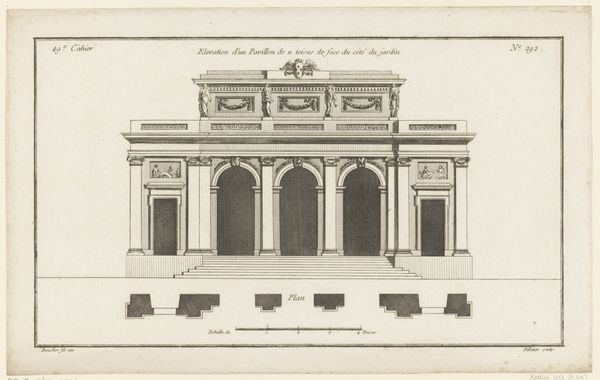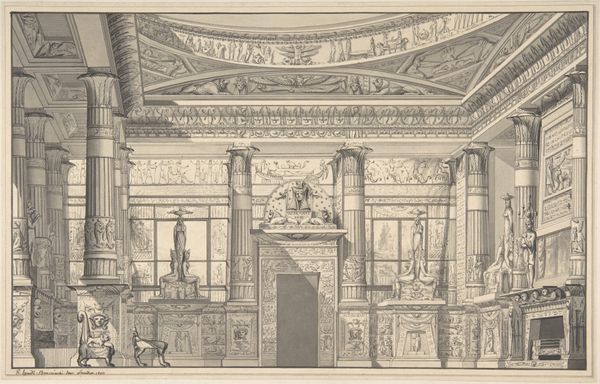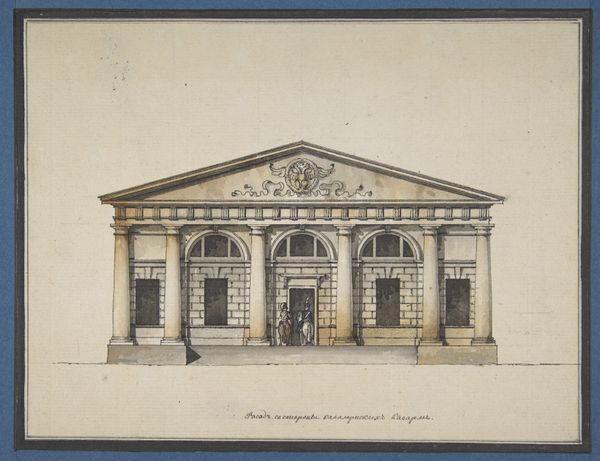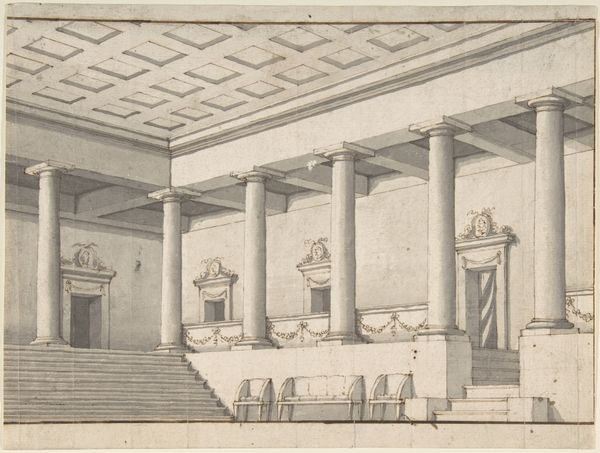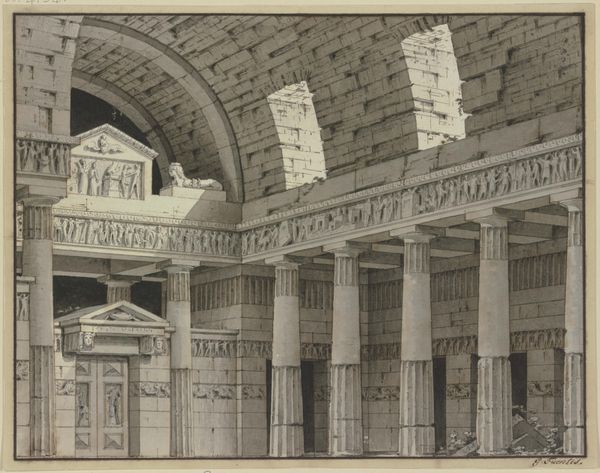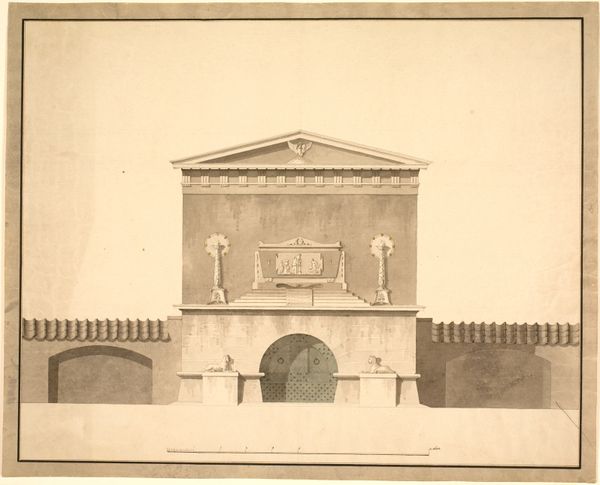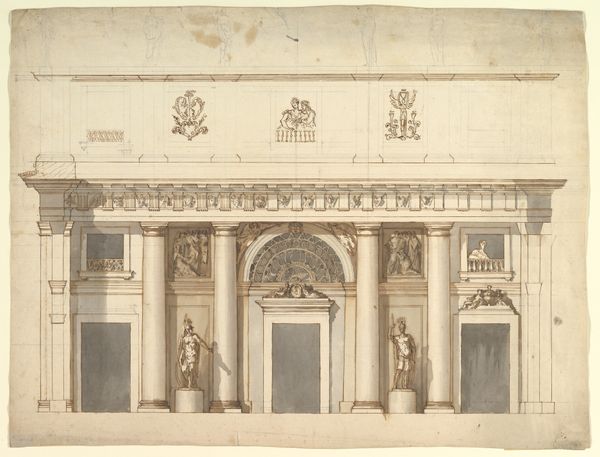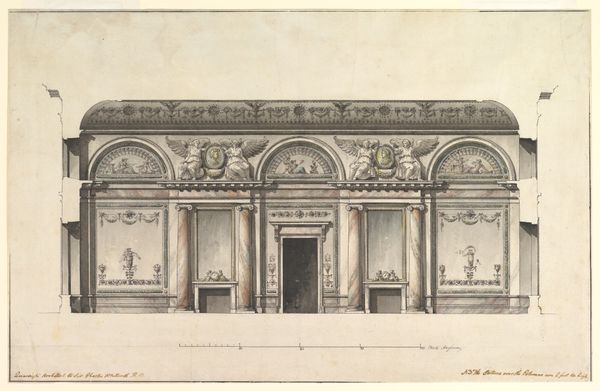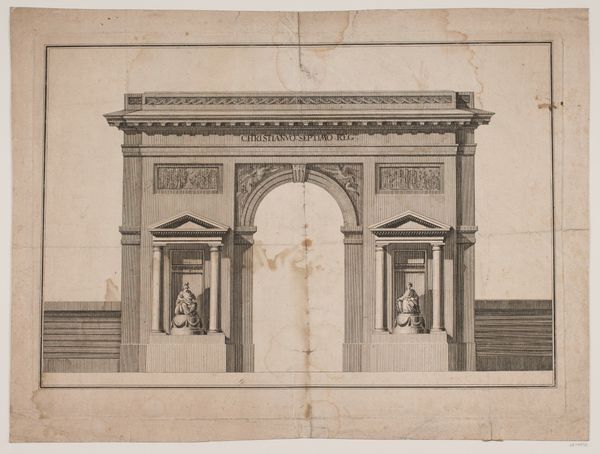
Elevation of the Entrance to an Arsenal 1734 - 1789
0:00
0:00
drawing, print, engraving, architecture
#
drawing
#
neoclacissism
# print
#
landscape
#
cityscape
#
engraving
#
architecture
Dimensions: 7 5/8 x 11 7/8 in. (19.3 x 30.2 cm.)
Copyright: Public Domain
Editor: Here we have "Elevation of the Entrance to an Arsenal," an engraving and drawing by Jean Charles Delafosse, dating somewhere between 1734 and 1789. It strikes me as an imposing structure, meticulously rendered, but what aspects stand out to you? Curator: What I find fascinating is how Delafosse uses Neoclassical architectural representation to project power and civic virtue, reflecting the visual language employed by institutions seeking to legitimize themselves. Note how the arsenal becomes a statement of order and control through its idealized, almost theatrical, presentation. Who exactly is the audience for this sort of representation and how does the arsenal perform a function for that viewer, or a group? Editor: That's interesting, the idea of an arsenal as a theatrical stage. It makes me wonder about the actual function of the building versus its image. Was this intended for public display, or more for internal documentation? Curator: The print medium allowed for broader dissemination. Consider its potential role in shaping public perception of state authority and military might. Beyond its functional role, the arsenal becomes a symbol of a powerful, ordered society that is using art to impress people, but what do we know about what Delafosse intended it to be? Editor: So, the architecture and its depiction serve as propaganda almost? Something like a really persuasive advertisement? Curator: Precisely. And Delafosse, through this engraving, participates in constructing and reinforcing those power dynamics. Are you aware of any contemporary monuments with which it might be fruitful to draw a parallel? Editor: I guess I hadn’t considered architecture in such explicitly political terms before. Now I can definitely see how the grandeur serves a very specific purpose, beyond just housing weapons. Curator: It challenges us to think about how visual representations are deployed to shape and control narratives. And now, perhaps, how it also is something different for those of us analyzing it today? Editor: I never considered the Arsenal's message intended for past societies to still have importance in contemporary art culture and critique. I will never view architectural artwork again without reflecting on its background and the motives it conveys to specific audiences.
Comments
No comments
Be the first to comment and join the conversation on the ultimate creative platform.
